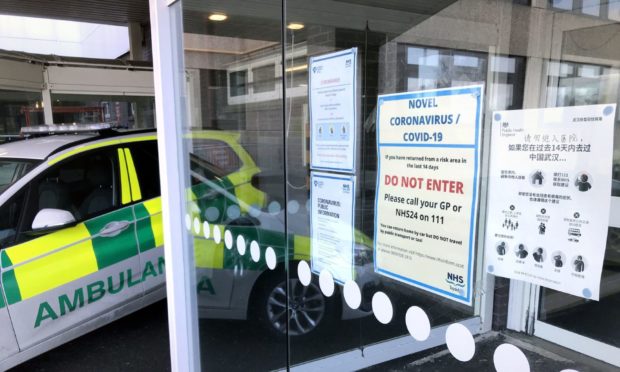As coronavirus cases in Scotland continue to rise, new data reveals the hotspots for infections across Tayside and Fife.
Kirriemuir remains the most infected part of Scotland based on its ratio of cases to population.
In the seven days leading up to June 7 there were 67 cases in the Kirriemuir ward, with a case rate per 100,00 of 1123.4.
This is the highest number of cases per population since the start of the pandemic in the area.
Several parts of Dundee are also identified as hotspots with some of the highest case rates in Scotland.
Douglas East, Baxter Park and Stobswell all have case rates per 100,000 above 400, the highest coronavirus alert level.
Douglas East reported 26 cases in the week leading up to June 7, giving it a case rate of 941.
Baxter Park recorded 24 cases, whilst the Stobswell area of the city recorded 35 cases during the same period.
In Fife, Dysart remains the area with the highest ratio of cases to population, with a seven-day case rate of 434 per 100,000.
Letham, Inveralmond, Central and South Inch and Muirton top the list as the most infected parts of Perth and Kinross.
In Letham, 21 cases over the previous seven days gave the area a case rate of 387 per 100,000.
Across Tayside and Fife, the Covid-19 case rate continues to rise, with Dundee City the worst affected area followed by Angus, Perth and Kinross and Fife.
First Minister Nicola Sturgeon was asked about the situation in Dundee in the Scottish Parliament on Tuesday.
She said an incident management team was dealing with the infection rate locally, but did not suggest further restrictions could be placed on the city.
Addressing rising cases across Scotland, the First Minister said the government was ‘optimistic’ that vaccination would allow lockdown to continue to ease.
“We continue to assess the data on this very closely – and, at this stage, we remain optimistic that vaccination will allow us to move progressively to a less restrictive way of dealing with the virus,” she said.
“We have evidence that two doses of the vaccine does give protection against serious illness, even with the new Delta variant.”
Nicola Sturgeon also pointed to early evidence showing that the vaccine was reducing the need for people to be hospitalised.
“At the start of the year, around 10% of new Covid cases were admitted to hospital. Over the course of May, that was 5%,” she added.
“However, it is important that we continue to monitor the data so that the full impact of the Delta variant can be assessed.”
The next lockdown review is due June 21, with any changes scheduled to take affect the following week on June 28.
